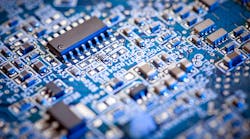Texas Instruments introduced new chips for charging battery cells in consumer electronics more rapidly and efficiently, promising to boost battery life and save valuable space inside smartphones, smart doorbells and other devices. TI said the chips BQ25790 and BQ25792, have high power density and can be used for universal, ultrafast charging at high efficiency.
TI said the buck-boost battery chargers can support three times faster charging times than other products on the market, while also delivering significantly longer battery life.
The chips can be used to recharge batteries with one to four cells in the series, TI said. The current can be programmed up to 5 amps (A) for power sources ranging from 3.6 volts to 24 volts (V). The buck-boost architecture is capable of charging the battery cells with high accuracy and high efficiency to its final voltage, regardless of whether the voltage from the charging cable or wireless charging pad is higher or lower than the voltage of the battery.
By reducing the power draw and power loss through heat dissipation, the chips boost the battery life of consumer electronics. The chips are designed to support fast charging at up to 97% efficiency. Lithium-ion (Li-ion) and lithium-polymer (LiPo) battery cells can be refilled by TI's battery management ICs. The chips also integrate the power path management so that they can handle more power than other battery chargers in a smaller package.
The chips support fast charging with USB Type-C and USB PD ports and wireless charging for smartphones and other consumer devices like smart doorbells and thermostats. They support a wide range of other power sources, including USB ports in gaming consoles and personal computers and the barrel connectors at the end of power bricks and adapters. TI said the devices can handle up to 30 V from the power source before it becomes unsafe.
The chips are designed to detect the battery's voltage and then carefully charge the battery in different phases, TI said. If the battery is severely discharged, the charger sends small amounts of “preconditioning” or "precharging" current into the battery to boost voltage levels over a safe threshold. The precharge current tends to be around 10% of the full charging current. That prevents current from rushing in and overheating the battery.
The precharging phase prepares the battery for the constant current (CC) phase, where the battery charger delivers a constant current at varying voltages, resulting in rapid charging.
Once the battery is nearly fully charged, TI's battery chargers start up the constant voltage (CV) phase in order to prevent overcharging, which can severely erode battery life and lead to overheating as well as fires. Keeping the voltage at a constant level gradually reduces the current refilling the battery. Once the current falls far enough, charging is terminated. TI said that customers can program the termination current in the 40 mA to 1 A range.
To guarantee the battery is completely charged, the chips come with "top-off timers" that allow for additional charging on top of the primary charging cycle. The ICs can also support "trickle charging" or sending small amounts of current to top up the battery at the same rate the system burns through the energy stored in the battery cells. The new chips can also be used to power the system while independently charging the battery, TI said.
TI, the world's largest vendor of analog semiconductors, said the chips are packing more than 50% higher power density than other components on the market. That reduces the footprint of the circuit board and bill of materials (BOM) costs in smartphones, doorbells, drones, and other consumer devices. TI said that for the first time it integrated MOSFETs, the battery FET, current sensors and other components in its buck-boost chargers.
The chips are also designed to prolong the battery life of devices that are active for short amounts of time and that are asleep in standby mode for long intervals, TI said. The chips consume less than one microamp (µA) of standby current, resulting in more than 5 times longer shelf. TI said the chips consume 10 times less standby current in shutdown mode—around 600 nanoamps (nA)—than other battery management ICs on the market.
Other features include fail-safes to protect against overvoltage and overcurrent events. The chips carefully control the amount of current and voltage delivered to the battery in order to prevent overcharging, which makes the battery more vulnerable to overheating. Overheated or damaged batteries can burst into flames.
The chips also contain safeguards to prevent the battery's temperature from rising too dangerously during charging, according to TI. The chips are designed to determine and carefully control the temperature of the battery so that the charging can be shut down if the temperature runs over a safe threshold.
The charging safety timers add another level of protection to the system. These types of components stop the battery from charging if a time limit runs out due to sudden system failure. The safety timers are also used to determine whether the battery is taking too long to finish the precharging phase, which could indicate a short circuit in the battery. The ICs are also designed to report charging status and fault conditions to the system, TI said.
The company has started rolling out the chips in 2.9-mm by 3.3-mm and 4-mm by 4-mm packages, giving them the smallest footprint of any other buck-boost battery charger on the market. The BQ25790 and BQ25792 cost $2.29 each in orders of one thousand units.

